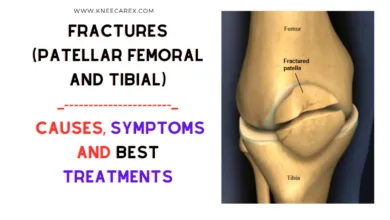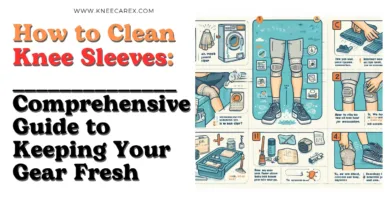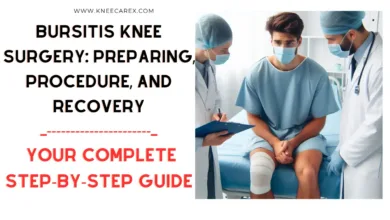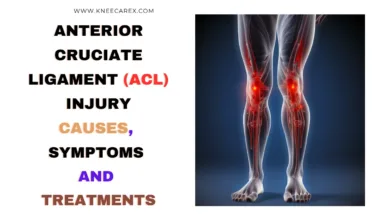Chondromalacia Patella: Causes, Symptoms and Treatments
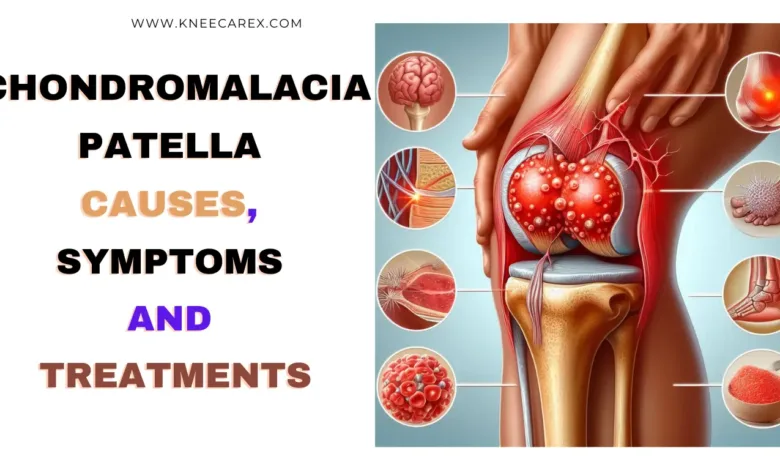
Are you tired of knee pain putting a damper on your active lifestyle? Chondromalacia patella, also known as runner’s knee, is a common but often misunderstood condition that affects people of all ages. This comprehensive article will delve into the causes, symptoms, and treatments of chondromalacia patella to shed light on this prevalent yet under-discussed issue.
Contents
- 1 Understanding chondromalacia patella
- 2 Understanding the factors that contribute to it
- 3 Recognizing the signs of chondromalacia patella
- 4 How doctors identify and diagnose the condition
- 5 Managing and Treating chondromalacia patella
- 6 Tips for preventing and reducing the risk
- 7 FAQ’s
- 7.1 What is the best treatment for chondromalacia patella?
- 7.2 Will chondromalacia patella go away?
- 7.3 Is chondromalacia patella arthritis?
- 7.4 What happens if chondromalacia patella is left untreated?
- 7.5 What is the fastest way to heal chondromalacia?
- 7.6 How did I cure my chondromalacia patella?
- 7.7 What supplements are good for chondromalacia patella?
- 7.8 What is the new treatment for chondromalacia patella?
- 7.9 Does chondromalacia patella ever go away?
- 7.10 What is the best treatment for chondromalacia?
- 7.11 What worsens chondromalacia?
- 7.12 What happens if chondromalacia patella is left untreated?
- 7.13 What is the best treatment for chondromalacia patella?
- 7.14 What happens if chondromalacia patella is left untreated?
- 7.15 What can be mistaken for chondromalacia?
- 7.16 What are the three stages of chondromalacia?
- 7.17 Can chondromalacia patella be cured?
- 7.18 Can you see chondromalacia on an MRI?
- 7.19 What exercises should you avoid with the chondromalacia patella?
- 7.20 How do you fix the chondromalacia patella?
- 7.21 Can you live with chondromalacia patella?
- 7.22 At what age does chondromalacia patella start?
- 7.23 Who is at risk for chondromalacia patella?
- 7.24 Can I walk with the chondromalacia patella?
- 7.25 What is the best treatment for chondromalacia patella?
- 7.26 What is Grade 4 patellar chondromalacia?
- 7.27 Does the Grade 3 chondromalacia patella need surgery?
- 7.28 Can Grade 3 chondromalacia heal?
- 8 Conclusion: Chondromalacia Patella
Understanding chondromalacia patella
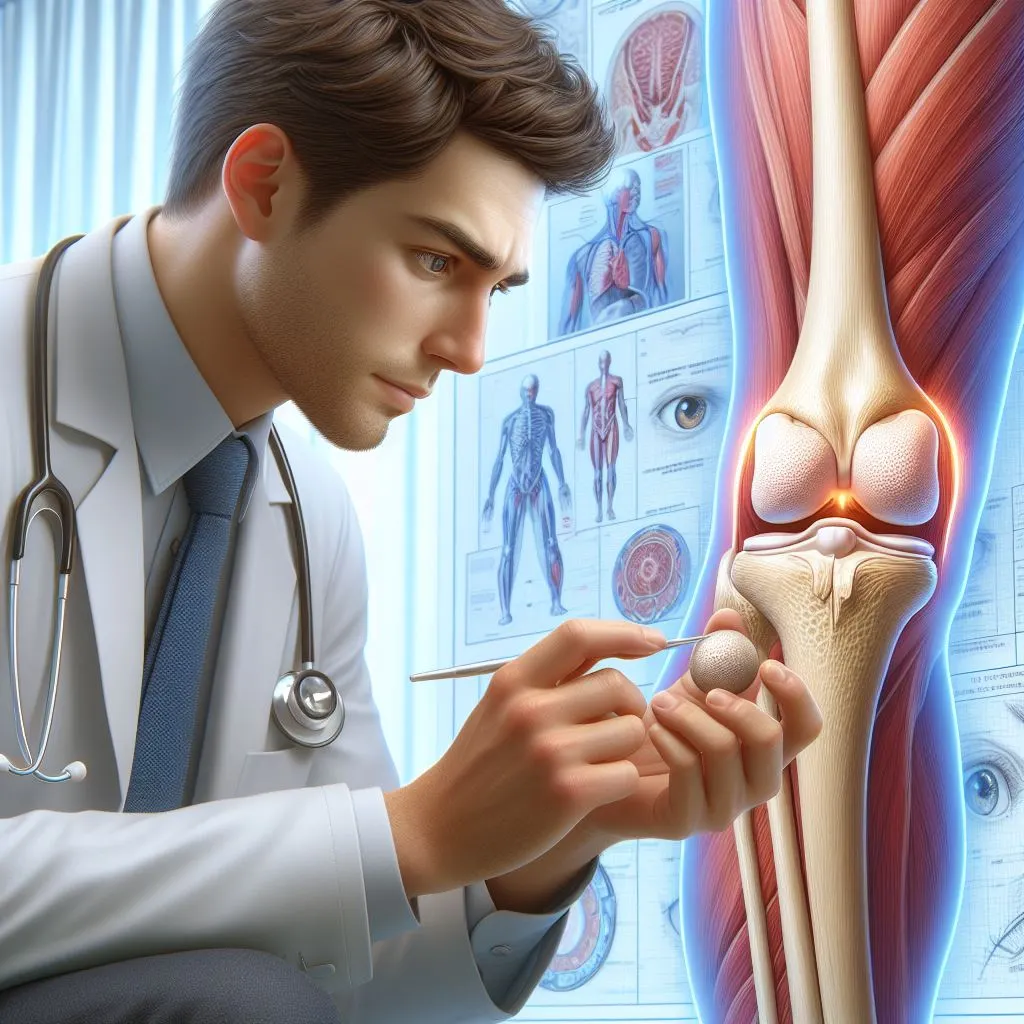
Another intriguing aspect of chondromalacia patella is its link to psychological factors such as fear-avoidance behavior and kinesiophobia. Studies have shown that individuals with a knee may develop a fear of movement due to pain, which can lead to decreased physical activity and prolonged recovery. Recognizing and addressing these psychological aspects through cognitive-behavioral therapy or counseling can be a crucial component in managing the chondromalacia patella effectively. Ultimately, by taking a holistic approach that considers both the physical and psychological aspects of this condition, individuals can improve their quality of life and regain confidence in their ability to engage in physical activities without fear or discomfort.
Choosing the Right Support: Patella Band vs Knee Sleeve for Knee Pain Relief
Understanding the factors that contribute to it
Understanding the causes of chondromalacia patella is crucial to developing effective treatment strategies. One significant factor is overuse or repetitive stress on the knee joint, often observed in athletes and individuals with physically demanding occupations. This constant pressure can wear down the protective cartilage under the kneecap, leading to pain and discomfort. Misalignment of the kneecap due to muscle imbalances or structural issues can also contribute to this condition. Such misalignment puts uneven pressure on the cartilage, leading to its deterioration over time.
Moreover, it’s essential to consider genetic predispositions when exploring the causes of chondromalacia patella. Some individuals may have a naturally shallower groove where their kneecap sits, increasing the risk of cartilage damage and subsequent symptoms. Furthermore, factors such as poor biomechanics during physical activities or inadequate stretching before exercising can also significantly trigger this condition. By understanding these multifaceted contributors, healthcare professionals can effectively tailor treatment plans that address each cause for optimal patient outcomes.
Recognizing the signs of chondromalacia patella
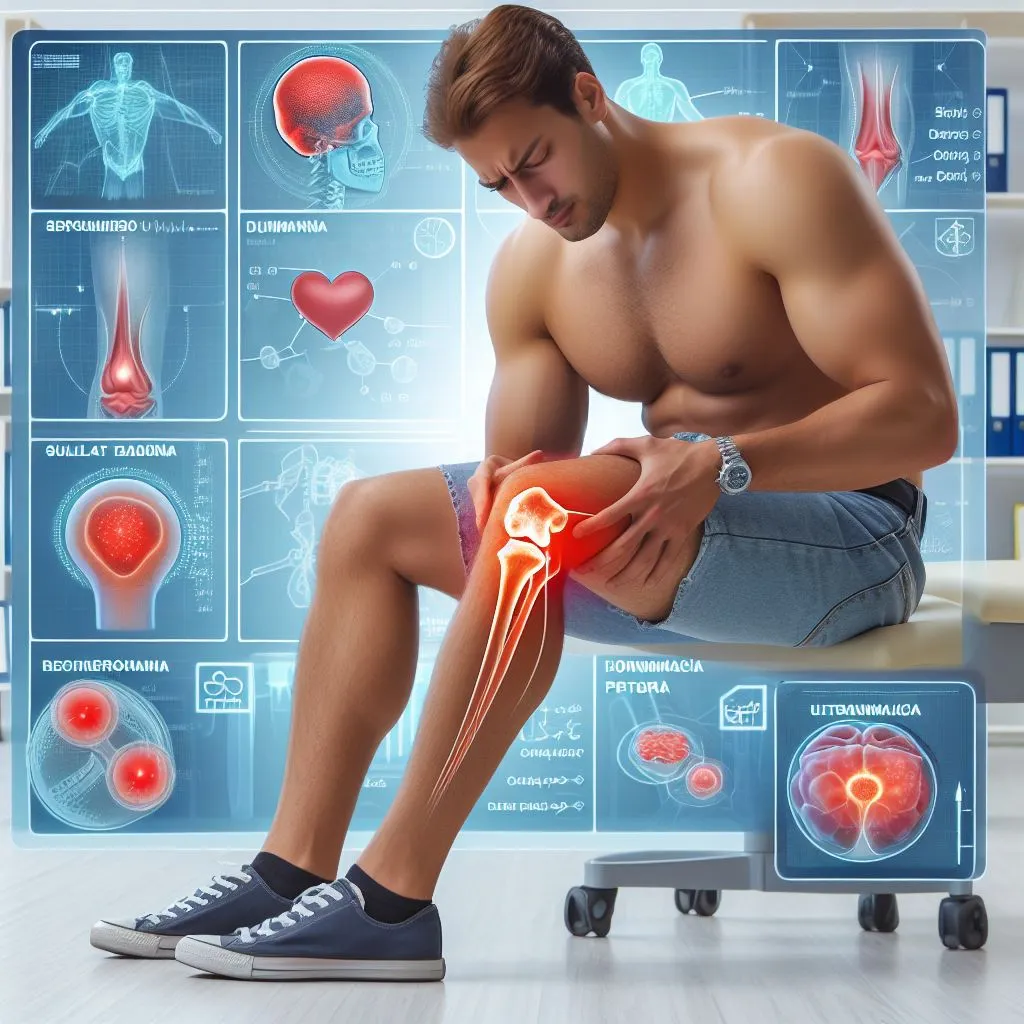
Pay attention to any changes in your knee function and seek medical advice if you notice persistent symptoms of chondromalacia patella. In some cases, individuals may also experience weakness or instability in the knee, which can impact mobility and everyday activities. By recognizing these subtle yet significant signs early on, individuals can take proactive steps toward managing their condition and preventing further knee joint deterioration.
How doctors identify and diagnose the condition
Diagnosing chondromalacia patella is a crucial step in effectively treating the condition. One of the primary methods doctors use is a thorough physical examination, focusing on the knee joint and surrounding areas. During this process, doctors may manipulate the knee to assess for pain, mobility issues, and any unusual sensations that could indicate chondromalacia patella. Additionally, imaging tests such as X-rays or MRIs may be employed to visually inspect the cartilage under the kneecap and identify any irregularities.
Furthermore, in some cases, doctors may perform an arthroscopy to visualize and directly diagnose chondromalacia patella within the knee joint. This minimally invasive procedure allows for precise examination of the cartilage surfaces while also providing an opportunity for immediate treatment if needed. By utilizing these diagnostic techniques, healthcare professionals can accurately identify chondromalacia patella and tailor treatment plans to address each patient’s unique situation best.
Managing and Treating chondromalacia patella
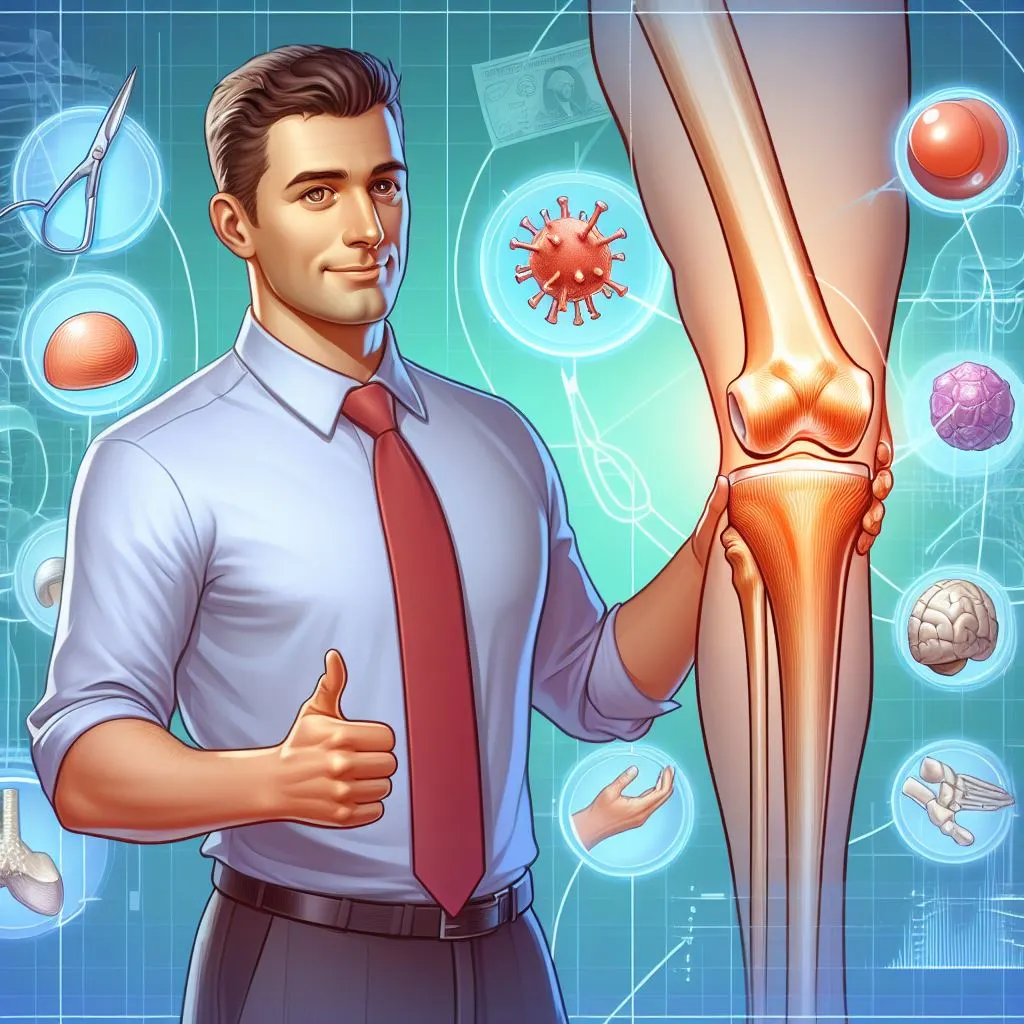
In addition to physical therapy, orthotic devices such as knee braces or shoe inserts can provide added support and alignment for the knee joint, helping to relieve pressure on the patella. Another non-invasive treatment option is ultrasound therapy, which uses high-frequency sound waves to stimulate blood flow and promote healing in the affected area. These various treatment options offer hope for those suffering from chondromalacia patella by providing a range of practical strategies to manage and alleviate their symptoms.
Tips for preventing and reducing the risk
Prevention of chondromalacia patella involves a range of strategies to reduce the risk and minimize the impact of this condition. One key aspect is maintaining a healthy weight, as excess weight can put added pressure on the knees, leading to increased wear and tear on the cartilage. Regular low-impact exercises such as swimming or cycling can help strengthen the supporting muscles around the knee, providing better stability and reducing strain on the patellar cartilage.
Furthermore, paying attention to proper footwear is crucial to preventing chondromalacia patella. Wearing supportive shoes that provide adequate cushioning and shock absorption during physical activities can significantly reduce stress on the knee joint. Additionally, incorporating stretching and flexibility exercises into your routine can improve overall joint function and decrease stiffness in the knee, ultimately lowering the risk of developing chondromalacia patella.
FAQ’s
What is the best treatment for chondromalacia patella?
Chondromalacia patella, also known as runner’s knee, is a common condition that causes pain around the kneecap due to softening or wearing down of the cartilage. When it comes to treatment, there is no one-size-fits-all solution. However, a combination of conservative techniques and innovative therapies can offer significant relief to sufferers. Physical therapy plays a crucial role in managing chondromalacia patella by strengthening the muscles around the knee joint and improving flexibility.
Will chondromalacia patella go away?
Chondromalacia patella, also known as runner’s knee, can be a frustrating and painful condition to deal with. Many individuals wonder whether this ailment will ever go away. The good news is that in most cases, chondromalacia patella can improve and even resolve entirely with the proper treatment and self-care. Understanding the underlying causes, such as muscle imbalances, overuse, or improper biomechanics, is crucial to addressing the issue effectively.
Is chondromalacia patella arthritis?
Like arthritis, chondromalacia patella, commonly referred to as runner’s knee, affects the cartilage behind the kneecap. Younger people are disproportionately affected, particularly athletes and those who perform repetitive motions on their knees. On the other hand, arthritis affects many joints and is more prevalent in older adults. Understanding the distinction between arthritis and chondromalacia patella allows medical providers to customize beneficial interventions.
What happens if chondromalacia patella is left untreated?
Leaving chondromalacia patella untreated can lead to a range of debilitating consequences. The initial discomfort and pain in the knee can progress into persistent, chronic discomfort that interferes with daily activities. Over time, untreated chondromalacia patella can result in a significant loss of muscle strength and flexibility in the affected leg, leading to further complications such as instability and a potential risk of falls. Additionally, the degeneration of the cartilage under the kneecap may eventually lead to more severe conditions like osteoarthritis, causing long-term joint damage and irreversible changes in mobility.
What is the fastest way to heal chondromalacia?
The fastest way to heal chondromalacia is through a combination of targeted physical therapy, rest, and anti-inflammatory treatments. While many individuals may be tempted to return to everyday activities, allowing the affected knee joint to rest fully and repair is crucial for swift recovery. Physical therapy exercises that focus on strengthening the muscles around the knee can also expedite healing by supporting the damaged cartilage.
How did I cure my chondromalacia patella?
I had been struggling with chondromalacia patella for years, and no amount of rest or physical therapy seemed to alleviate the constant pain in my knees. Frustrated and desperate for relief, I turned to alternative treatments. After researching extensively, I discovered the benefits of acupuncture in treating knee pain. Skeptical at first, I decided to try it and was amazed by the results. The acupuncture sessions not only provided pain relief but also improved the mobility and strength of my knees.
What supplements are good for chondromalacia patella?
Chondromalacia patella, a condition characterized by the softening and breakdown of the cartilage on the underside of the kneecap, can be debilitating for many individuals. While there is no definitive cure for chondromalacia patella, certain supplements have shown promise in managing symptoms and supporting overall knee health. Glucosamine and chondroitin are popular because they promote cartilage repair and reduce inflammation in the knee joint. These supplements have been widely studied and have demonstrated potential for relieving pain associated with chondromalacia patella.
What is the new treatment for chondromalacia patella?
Promising therapies for chondromalacia patella include mesenchymal stem cell therapy and platelet-rich plasma (PRP) therapy. PRP treatment employs the patient’s platelets to lessen inflammation and encourage healing in the knee joint. Mesenchymal stem cell therapy offers options for long-term healing and functional restoration by using specialized cells to rebuild damaged tissue.
Does chondromalacia patella ever go away?
Chondromalacia patella, also known as runner’s knee, is a common condition that causes pain and discomfort in the knee area. Many wonder if chondromalacia patella ever goes away; the answer is not straightforward. While some cases may improve with conservative treatments such as rest, physical therapy, and anti-inflammatory medications, others may require more aggressive interventions like corticosteroid injections or even surgery. It’s important to note that every individual’s case is unique, and the resolution of chondromalacia patella depends on various factors, including the severity of the condition, adherence to treatment plans, and overall joint health.
What is the best treatment for chondromalacia?
Chondromalacia, also known as runner’s knee, can be a debilitating condition that affects the cartilage under the kneecap. While it is crucial to consult a healthcare professional for personalized advice, several treatments have shown promise in relieving chondromalacia symptoms. Physical therapy, mainly focusing on strengthening the quadriceps and improving patellar tracking, has been deemed effective in many cases. Additionally, low-impact exercises such as swimming or cycling can help maintain flexibility and reduce stress on the knee joint.
What worsens chondromalacia?
Chondromalacia, a condition characterized by the softening and breakdown of the cartilage under the kneecap, can be worsened by certain factors that individuals should be mindful of. One significant contributor to worsening chondromalacia is overuse or repetitive stress on the knee joint. Activities such as running, jumping, or squatting can place excessive pressure on the kneecap, leading to further deterioration of the cartilage.
What happens if chondromalacia patella is left untreated?
If left untreated, Chondromalacia patella can lead to progressive cartilage degeneration under the kneecap. Patients may experience chronic knee pain as the condition worsens, especially during physical activities and prolonged periods of sitting or bending the knee. Over time, untreated chondromalacia patella can weaken knee structures and increase the risk of developing other knee-related conditions, such as osteoarthritis.
What is the best treatment for chondromalacia patella?
Runner’s knee, or chondromalacia patella, is a problematic ailment that can be treated with surgery, orthotic devices, physical therapy, and activity reduction. In addition to increasing flexibility and strengthening the quadriceps muscles, physical therapy can help the joint heal by minimizing activities that aggravate the problem. Support and alignment can be obtained via orthotic devices or shoe inserts. Surgery could be suggested in extreme circumstances. Working with a healthcare provider to create a personalized treatment plan is crucial.
What happens if chondromalacia patella is left untreated?
Chondromalacia patella, if left untreated, can lead to a worsening of symptoms and potentially result in more severe complications. The initial discomfort and pain felt when walking or climbing stairs can progress to chronic pain that interferes with daily activities. Over time, the friction between the kneecap and the underlying bone can cause further damage to the cartilage, leading to increased joint inflammation and the potential deterioration of the knee joint.
What can be mistaken for chondromalacia?
Misdiagnosis of chondromalacia occurs frequently due to confusion with other illnesses, such as patellofemoral pain syndrome (PFPS) and patellar tendinitis. While PFPS is characterized by extended sitting or climbing stairs, PFPS is characterized by dull pain around or under the kneecap. To distinguish between various illnesses, provide an efficient treatment plan, and prevent confusion, healthcare providers should perform a thorough assessment.
What are the three stages of chondromalacia?
There are three stages of chondromalacia, commonly referred to as runner’s knee: mild, chronic, and severe. The first stage of cartilage breakdown is somewhat uncomfortable. During the second stage, day-to-day duties become challenging because of chronic discomfort, swelling, and grinding sensations. Severe cartilage destruction causes excruciating pain, stiff joints, and restricted movement in the third stage. It is essential to comprehend these phases to implement early intervention and management techniques, such as lifestyle modifications and medical advice.
Can chondromalacia patella be cured?
Chondromalacia patella, also known as runner’s knee, can be a challenging condition to deal with. While it may not have a straightforward cure, various treatment options can effectively manage the symptoms and improve the disease. These treatments may include physical therapy to strengthen the muscles around the knee, activity modification to reduce stress on the joint, and orthotics or bracing to provide support.
Can you see chondromalacia on an MRI?
An MRI can be used to see the softening and degradation of the kneecap cartilage in a disorder called chondromalacia. With this imaging method, physicians may obtain precise images of the knee joint, facilitating evaluation, identifying anomalies, and assessing the condition’s severity. The capacity of MRI to identify minute alterations helps in illness progression tracking and customized therapy regimens.
What exercises should you avoid with the chondromalacia patella?
One way to manage chondromalacia patella is to avoid high-impact exercises like running and jumping that strain the knee joint. Alternatively, strength and stability can be enhanced by low-impact workouts like elliptical machines, swimming, and cycling. Quadriceps muscles can be strengthened with physical therapy exercises without overstretching the kneecap. People can still be active and relieve discomfort by altering their training routines.
How do you fix the chondromalacia patella?
Chondromalacia patella, also known as runner’s knee, can be a frustrating and painful condition to deal with. However, there are several effective ways to address it. Physical therapy focused on strengthening the quadriceps muscles and improving flexibility can help alleviate symptoms and prevent recurrence. Additionally, incorporating low-impact activities like swimming or cycling into your exercise routine can reduce knee stress while maintaining fitness levels.
Tennis knee injury: Causes And Treatment For Knee Injuries From Tennis
Can you live with chondromalacia patella?
Living with chondromalacia patella can be challenging, but it is possible to manage the condition and live a fulfilling life. While the knee pain and discomfort associated with chondromalacia patella can be frustrating, there are various treatment options available, such as physical therapy, strengthening exercises, and sometimes surgery. Individuals with this condition need to work closely with healthcare professionals to develop a personalized treatment plan that addresses their needs and goals.
At what age does chondromalacia patella start?
Chondromalacia patella, also known as runner’s knee, can affect individuals of any age, but it most commonly presents in adolescents and young adults. The condition is often linked to overuse or improper alignment of the kneecap, leading to cartilage softening and pain behind or around the kneecap. While chondromalacia patella can also occur in older individuals, younger people are more susceptible due to their active lifestyle and participation in sports or physical activities that put stress on the knees.
Who is at risk for chondromalacia patella?
Dancers, hikers, and participants in high-impact sports are among people of all ages and activity levels who might develop chondromalacia patella, commonly referred to as runner’s knee. Individuals may be predisposed by structural variables such as muscle imbalances, kneecap misalignment, and a history of knee injuries. Genetics is also involved; specific differences affect vulnerability. Knowing these risk factors can enable people to take preventative action and assist medical professionals in spotting possible problems early.
Can I walk with the chondromalacia patella?
Chondromalacia patella, or runner’s knee, can cause significant discomfort and knee pain. While it may be challenging to walk with this condition, gentle, low-impact walking can be beneficial for strengthening the surrounding muscles and improving overall joint stability. It’s crucial to listen to your body and start with short walks, gradually increasing the duration and intensity as you build strength in your quadriceps and hamstrings.
Walking After a Patellar Fracture: 5 Things You Need to Know
What is the best treatment for chondromalacia patella?
Chondromalacia patella, often referred to as runner’s knee, can be frustrating and painful. While there is no one-size-fits-all treatment for chondromalacia patella, a combination of physical therapy, strengthening exercises, and activity modification can often effectively manage symptoms. Physical therapy aims to strengthen the muscles around the knee, particularly the quadriceps and hamstrings, which helps stabilize the joint and reduce stress on the patella. Specific exercises targeting hip and core strength can also play a crucial role in improving biomechanics and reducing strain on the knee.
What is Grade 4 patellar chondromalacia?
Grade 4 patellar chondromalacia is a severe condition that affects the cartilage lining on the underside of the kneecap. This advanced stage of chondromalacia is characterized by severe damage and breakdown of the cartilage, leading to significant pain, swelling, and difficulty in knee movement. It often occurs due to long-term untreated patellar malt racking or instability, causing the kneecap to rub against the femoral groove with excessive force, eventually leading to cartilage degeneration.
Does the Grade 3 chondromalacia patella need surgery?
It is important to note that not all grade 3 chondromalacia patella cases require surgery. Many individuals with this condition can find relief through non-surgical treatments such as physical therapy, strengthening exercises, and activity modification. While surgery may be necessary in severe cases or when conservative treatments have been unsuccessful, it is not always the first line of treatment.
Can Grade 3 chondromalacia heal?
Treatment options for grade 3 chondromalacia include physical therapy, anti-inflammatory drugs, and lifestyle modifications. Surgical intervention may be required in certain circumstances. Patients should take an active role in healing, adhere to medical advice, and consider complementary therapies such as acupuncture or specific exercises. It is possible to obtain notable changes in joint health and symptoms with persistence and personalized care.
Conclusion: Chondromalacia Patella
In conclusion, chondromalacia patella is a painful and often debilitating condition that affects the cartilage on the undersurface of the kneecap. The key points to remember are that various factors, such as overuse, injury, or knee joint misalignment, can cause it. Symptoms include pain around or behind the kneecap, particularly when bending the knee or engaging in physical activity.
